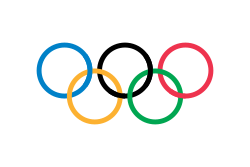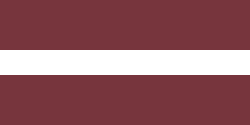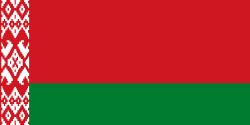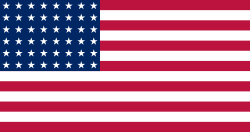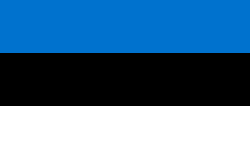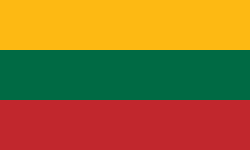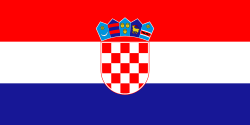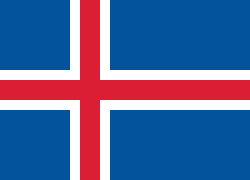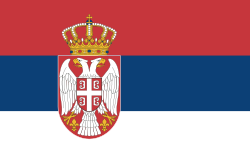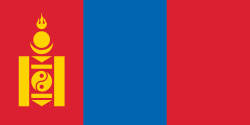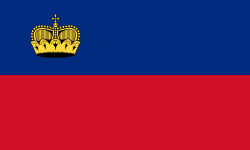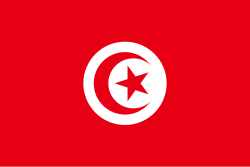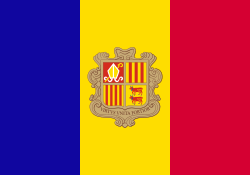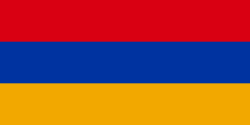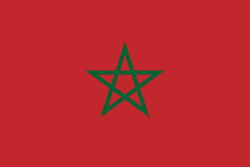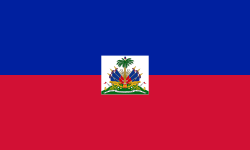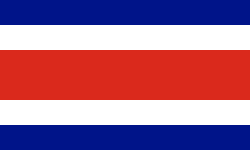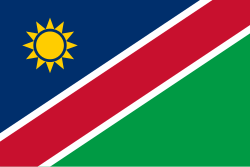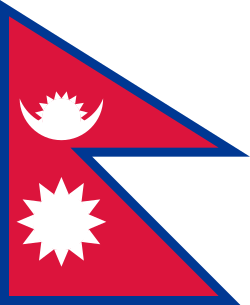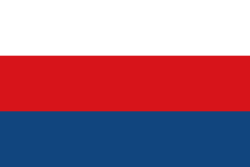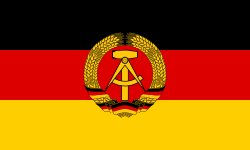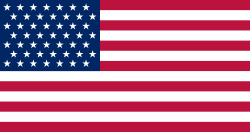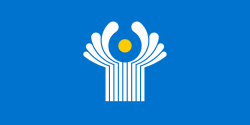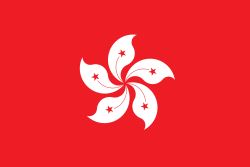Ruská hokejová reprezentace
| Přezdívka | Красная Машина |
|---|---|
| Asociace | Ruská hokejová federace |
| Trenér | Alexej Žamnov |
| Kapitán | Alexandr Kadějkin |
| Nejvíce startů | Ilja Kovalčuk (123) |
| Nejvíce bodů | Ilja Kovalčuk (107) |
| Nejlepší střelec | Ilja Kovalčuk (50) |
| Kód IIHF | RUS |
| První zápas | |
(12. dubna 1992, Petrohrad, Rusko) | |
| Nejvyšší výhra | |
(15. května 2019, Bratislava, Slovensko) | |
| Nejvyšší prohra | |
(29. prosince 1993, Chamonix, Francie) | |
| Mistrovství světa | |
| Elitní skupina | 28× (poprvé v roce 1992) |
| Nejlepší výsledek | |
| Olympijský turnaj | |
| Účasti | 6× (poprvé v roce 1994) |
| Nejlepší výsledek | |
| Světový pohár | |
| Účasti | 3× (poprvé v roce 1996) |
| Nejlepší výsledek | |
| Euro Hockey Tour | |
| EHT | 23× (poprvé v roce 1996/1997) |
| Nejlepší výsledek | |
| Stránka týmu na IIHF.com | |
| Údaje v infoboxu aktuální k roku 2019 | |
Ruská reprezentace ledního hokeje, rusky Сборная России по хоккею с шайбой, je jedním z nejúspěšnějších a nejtradičnějších národních týmů v historii ledního hokeje. Jde o nástupnickou reprezentaci sovětské hokejové reprezentace. Největším úspěchem byl zisk pěti titulů mistrů světa a zisk stříbrné medaile na zimních olympijských hrách v roce 1998. Na Zimních olympijských hrách v roce 2014 se ruské národní hokejové mužstvo umístilo na 5. místě, na Mistrovství světa konaném v roce 2019 na Slovensku se ruská sborná umístila na 3. pozici, když v boji o bronzovou medaili porazila českou hokejovou reprezentaci na samostatné nájezdy. Od roku 2022 minimálně do roku 2026 je reprezentace spolu s Běloruskou hokejovou reprezentaci dočasně neaktivní v soutěžích IIHF – vyloučena rozhodnutím IIHF, kvůli ruské invazi na Ukrajinu.[1][2][3]
Historické výsledky
Rusko – zimní olympijské hry
| ZOH | Místo ZOH | Umístění | Soupisky | Trenér |
|---|---|---|---|---|
| ZOH – 1994 | 4. místo | Soupiska | Viktor Tichonov, Igor Dmitrijev | |
| ZOH – 1998 | Soupiska | Vladimir Jurzinov, Zinetula Biljaletdinov a Pjotr Vorobjov | ||
| ZOH – 2002 | Soupiska | Vjačeslav Fetisov, Vladimir Jurzinov a Vladislav Treťjak | ||
| ZOH – 2006 | 4. místo | Soupiska | Vladimir Krikunov | |
| ZOH – 2010 | 6. místo | Soupiska | Vjačeslav Bykov, Igor Zacharkin | |
| ZOH – 2014 | 5. místo | Soupiska | Zinetula Biljaletdinov | |
| ZOH – 2018 | Soupiska | Oļegs Znaroks | ||
| ZOH – 2022 | Soupiska | Alexej Žamnov |
* – ZOH 2018 se zástupci Ruska účastnili pod neutrální vlajkou ![]() OAR (Olympijský sportovec z Ruska) a úspěch se tedy nepřičítá Rusku jako státu.
OAR (Olympijský sportovec z Ruska) a úspěch se tedy nepřičítá Rusku jako státu.
** – ZOH 2022 se zástupci Ruska účastnili pod vlajkou ![]() ROC (Ruský olympijský výbor) a úspěch se tedy nepřičítá Rusku jako státu.
ROC (Ruský olympijský výbor) a úspěch se tedy nepřičítá Rusku jako státu.
Mistrovství světa
| Rok | Místa turnaje | Umístění |
|---|---|---|
| SP – 1996 | Stockholm, Helsinky, Praha, Garmisch-Partenkirchen, Ottawa, Philadelphia, Montreal, Vancouver, New York | 4. místo |
| SP – 2004 | Helsinky, Stockholm, Montreal, Kolín nad Rýnem, Saint Paul, Praha, Toronto | 6. místo |
| SP – 2016 | Petrohrad, Praha, Pittsburgh, Toronto | 4. místo |
Galerie dresů reprezentace
| ZOH 1994 | MS 1996 | SP 1996 | MS 1997 | MS 1998 |
 |  |  |  |  |
| ZOH 1998 a MS 1999 | MS 2000 | MS 2001–2004 | SP 2004 | SP 2016 |
 |  |  |  |  |
| ZOH 2018 | MS 2018 | MS 2021 | ZOH 2022 |
 |  |  |  |
Reference
- ↑ Zamítá se: IIHF vyřídila odvolání Ruska a Běloruska proti vyloučení ze soutěží. www.idnes.cz [online]. [cit. 2023-05-13]. Dostupné online.
- ↑ Rusko i Bělorusko nebudou na hokejovém MS v Česku, IIHF prodloužila zákaz startů | ČeskéNoviny.cz. www.ceskenoviny.cz [online]. [cit. 2023-05-04]. Dostupné online.
- ↑ Zákaz zatím platí. Rusové se na scénu nevrátí, Bělorusko přijde i o olympiádu. www.denik.cz [online]. [cit. 2023-02-13]. Dostupné online.
- ↑ Znarok končí na postu trenéra Ruska, vystřídá ho asistent Vorobjov. www.idnes.cz [online]. [cit. 2023-05-13]. Dostupné online.
Související články
Externí odkazy
 Obrázky, zvuky či videa k tématu Ruská hokejová reprezentace na Wikimedia Commons
Obrázky, zvuky či videa k tématu Ruská hokejová reprezentace na Wikimedia Commons - Oficiální stránky (rusky) (anglicky)
- Ruská hokejová reprezentace na IIHF
Média použitá na této stránce
An icon that represents a gold medal
An icon that represents a silver medal
An icon that represents a bronze medal
Flag of Canada introduced in 1965, using Pantone colors. This design replaced the Canadian Red Ensign design.
Olympijská vlajka
Vlajka České republiky. Podoba státní vlajky České republiky je definována zákonem České národní rady č. 3/1993 Sb., o státních symbolech České republiky, přijatým 17. prosince 1992 a který nabyl účinnosti 1. ledna 1993, kdy rozdělením České a Slovenské Federativní republiky vznikla samostatná Česká republika. Vlajka je popsána v § 4 takto: „Státní vlajka České republiky se skládá z horního pruhu bílého a dolního pruhu červeného, mezi něž je vsunut žerďový modrý klín do poloviny délky vlajky. Poměr šířky k její délce je 2 : 3.“
Finská vlajka
The Canadian Red Ensign used between 1921 and 1957.
This image has compared for accuracy (mainly colors) using an image from World Statesmen. The only change is making the maple leaves green from red. This image has compared for accuracy (mainly colors) using an image from World Statesmen. The most recent version of this image has changed the harp into one with a female figure; see [http://flagspot.net/flags/ca-1921.html FOTW
The Canadian Red Ensign used between 1921 and 1957.
This image has compared for accuracy (mainly colors) using an image from World Statesmen. The only change is making the maple leaves green from red. This image has compared for accuracy (mainly colors) using an image from World Statesmen. The most recent version of this image has changed the harp into one with a female figure; see [http://flagspot.net/flags/ca-1921.html FOTW
(c) I, Cmapm, CC BY-SA 3.0
The flag of the Soviet Union (1955-1991) using a darker shade of red.
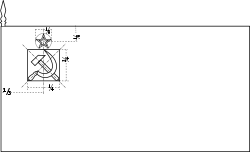
(c) I, Cmapm, CC BY-SA 3.0
The flag of the Soviet Union (1955-1991) using a darker shade of red.

US Flag with 48 stars. In use for 47 years from July 4, 1912, to July 3, 1959.
The Canadian Red Ensign, the national flag of Canada from 1957 to 1965. (see: the Canadian Red Ensign on the Register of Arms, Flags and Badges)
Flag of Australia, when congruence with this colour chart is required (i.e. when a "less bright" version is needed).
See Flag of Australia.svg for main file information.Při zobrazení tohoto souboru lze snadno přidat orámování
The Flag of Iceland.
- Horizontal aspect ratio: 7:1:2:1:14;
- Vertical aspect ratio: 7:1:2:1:7.
This is the national flag of Belgium, according to the Official Guide to Belgian Protocol. It has a 13:15 aspect ratio, though it is rarely seen in this ratio.
Its colours are defined as Pantone black, Pantone yellow 115, and Pantone red 032; also given as CMYK 0,0,0,100; 0,8.5,79,0; and 0,94,87,0.Georgian flag in Pantone MS.
Chinese Taipei Olympic Flag. According to the official website of Chinese Taipei Olympic Committee, Blue Sky(circle) & White Sun(triangles) above the Olympic rings is neither the National Emblem of the Republic of China, nor the Party Emblem of Kuomintang (KMT), but a design in between, where the triangles do not extend to the edge of the blue circle, as registered at International Olympic Committee in 1981 and digitally rendered in 2013. Besides, the blue outline of the five-petaled plum blossom is broader than the red one. Moreover, the CMYK code of the blue one and the Blue Sky & White Sun is "C100-M100-Y0-K0", and different from the Olympic rings (C100-M25-Y0-K0). Note that it's the only version recognized by IOC.
Chinese Taipei Olympic Flag. According to the official website of Chinese Taipei Olympic Committee, Blue Sky(circle) & White Sun(triangles) above the Olympic rings is neither the National Emblem of the Republic of China, nor the Party Emblem of Kuomintang (KMT), but a design in between, where the triangles do not extend to the edge of the blue circle, as registered at International Olympic Committee in 1981 and digitally rendered in 2013. Besides, the blue outline of the five-petaled plum blossom is broader than the red one. Moreover, the CMYK code of the blue one and the Blue Sky & White Sun is "C100-M100-Y0-K0", and different from the Olympic rings (C100-M25-Y0-K0). Note that it's the only version recognized by IOC.
Used color: National flag | South African Government and Pantone Color Picker
| zelená | rendered as RGB 0 119 73 | Pantone 3415 C |
| žlutá | rendered as RGB 255 184 28 | Pantone 1235 C |
| červená | rendered as RGB 224 60 49 | Pantone 179 C |
| modrá | rendered as RGB 0 20 137 | Pantone Reflex Blue C |
| bílá | rendered as RGB 255 255 255 | |
| černá | rendered as RGB 0 0 0 |
The national flag of Kingdom of Thailand; there are total of 3 colours:
- Red represents the blood spilt to protect Thailand’s independence and often more simply described as representing the nation.
- White represents the religion of Buddhism, the predominant religion of the nation
- Blue represents the monarchy of the nation, which is recognised as the centre of Thai hearts.
Flag of Iran. The tricolor flag was introduced in 1906, but after the Islamic Revolution of 1979 the Arabic words 'Allahu akbar' ('God is great'), written in the Kufic script of the Qur'an and repeated 22 times, were added to the red and green strips where they border the white central strip and in the middle is the emblem of Iran (which is a stylized Persian alphabet of the Arabic word Allah ("God")).
The official ISIRI standard (translation at FotW) gives two slightly different methods of construction for the flag: a compass-and-straightedge construction used for File:Flag of Iran (official).svg, and a "simplified" construction sheet with rational numbers used for this file.
bendera Indonesia
Zelený pruh má znázorňovat většinové katolické obyvatelsto Irska, oranžový pruh reprezentuje protestantskou menšinu a bílý pruh uprostřed znázorňuje mír a harmonii mezi nimi.
Flag of Liechtenstein
Flag of Portugal, created by Columbano Bordalo Pinheiro (1857-1929), officially adopted by Portuguese government in June 30th 1911 (in use since about November 1910).
Při zobrazení tohoto souboru lze snadno přidat orámování
The national and official state flag of Haiti; arms obtained from File:Coat of arms of Haiti.svg. The civil flag can be found at here.
Flag of Jamaica. “The sunshine, the land is green, and the people are strong and bold” is the symbolism of the colours of the flag. GOLD represents the natural wealth and beauty of sunlight; GREEN represents hope and agricultural resources; BLACK represents the strength and creativity of the people. The original symbolism, however, was "Hardships there are, but the land is green, and the sun shineth", where BLACK represented the hardships being faced.
Flag of Namibia
Flag of Serbia and Montenegro, was adopted on 27 April 1992, as flag of Federal Republic of Yugoslavia (1992-2003).
Flag of Serbia and Montenegro, was adopted on 27 April 1992, as flag of Federal Republic of Yugoslavia (1992-2003).
Flag of the Socialist Federal Republic of Yugoslavia (1946-1992).
The design (blazon) is defined in Article 4 of the Constitution for the Republic of Yugoslavia (1946). [1]
Autor: Jirka576W, Licence: CC BY-SA 4.0
Russian national team jerseys from World Cup of Hockey 2016 ... Big thanks to Realismadder for a large share on these jerseys.
Autor: Jágrmeister, Licence: CC BY-SA 4.0
Russia national team jerseys used at the 1997 IIHF World Championship.
The Canadian Red Ensign, the national flag of Canada from 1957 to 1965. (see: the Canadian Red Ensign on the Register of Arms, Flags and Badges)
US Flag with 49 stars. In use 4 July 1959–3 July 1960. It was defined in Executive Order 10798.
Autor: Jágrmeister, Licence: CC BY-SA 4.0
Russia national team jerseys used at the 2002 Winter Olympics and the IIHF World Championships from 2001 to 2004.
Autor: Realismadder, Licence: CC BY-SA 4.0
The home and away jerseys of Russia national ice hockey team used from the 2018 IIHF World Championship.
Autor: Realismadder, Licence: CC BY-SA 4.0
Russia national team jerseys used in the 1998 Winter Olympic Games and the 1999 IIHF World Championships.
Autor: Realismadder, Licence: CC BY-SA 4.0
The home and away jerseys of the Russia national ice hockey team used at the 1994 Winter Olympics.
Autor: Realismadder, Licence: CC BY-SA 4.0
The home and away jerseys of the ROC ice hockey team used from the 2021 IIHF World Championship.
Autor: Jágrmeister, Licence: CC BY-SA 4.0
Russia national team jerseys used at the 1996 IIHF World Championship.
Autor: Realismadder, Licence: CC BY-SA 4.0
The home and away jerseys of the OAR (Olympic Athletes from Russia) ice hockey team used at the 2018 Winter Olympics.
Autor: Jágrmeister, Licence: CC BY-SA 4.0
The home and away jerseys of the ROC national ice hockey team used at the 2022 Winter Olympics.
Autor: Jágrmeister, Licence: CC BY-SA 4.0
Russia national team jerseys used at the 1998 IIHF World Championship.
Autor: Jágrmeister, Licence: CC BY-SA 4.0
Russia national team jerseys used at the 2000 IIHF World Championship.
Autor: Jágrmeister, Licence: CC BY-SA 4.0
Russia national team jerseys used at the 1996 World Cup of Hockey.
Autor: Jágrmeister, Licence: CC BY-SA 4.0
Russia national team jerseys used at the 2004 World Cup of Hockey.










